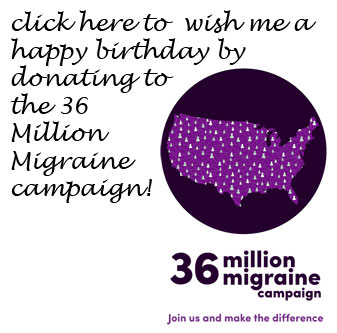Learning that research has found connections between migraine and stroke and heart disease can be chilling. Fortunately, the news is not as bad as it might first appear. I spoke with headache specialist Gretchen Tietjen, M.D., about an article on the connection between migraine and an increased risk of stroke and cardiovascular disease that she wrote for the American Migraine Foundation. “From a patient’s perspective, this information is frightening,” I told her (because I have no poker face, even on the telephone). Dr. Tietjen soothed my worries tremendously by putting the information into perspective.
“It can be very scary when you read things like this,” Dr. Tietjen said. “Study after study shows this little bit of increase.” However, the risk is very small. The most important takeaway is that patients should keep migraine in mind as part of their overall risk for stroke and heart disease. If you have migraine and are at increased risk of stroke or heart disease, it’s extra important to be aware of and manage those risk factors.
Migraine Increases the Risk of Stroke and Cardiovascular Diesease (But Only a Little Bit)
Yes, migraine does increase the risk of stroke, particularly for women who have migraine with aura. But the risk is very, very small. Less than 1% of all strokes in women have any connection to migraine. And the presence of a connection is not proof of a causal relationship—that is, just because the two are linked doesn’t mean that migraine causes stroke.
The article reports that a recent study found “that migraine increases the risk of stroke, coronary events, and related death by about 50%.” At first glance, that sounds terrifying, but Dr. Tietjen’s clarification was soothing. She said, “This sounds worrisome but to put this in perspective only 1% of the total population in the study had a cardiovascular event over the 20 years of follow-up. The take home message is that having migraine does not mean you will have heart disease or a stroke, only that it appears to slightly increase the risk.”
Risk Factors For Stroke and Heart Disease
Dr. Tietjen highlighted risk factors like smoking, high blood pressure, high cholesterol, and diabetes. She said that in people with migraine, these factors have an additive effect—the combination of more than one risk factor is worse than any one by itself. If you have any of these risk factors in addition to migraine, quitting smoking, lowering your blood pressure and/or cholesterol, or getting your diabetes under control could lower your risk of heart disease substantially. Smoking is the risk factor that stands out the most to Dr. Tietjen. Studies of migraine and smoking have shown that the combination of the two increases your stroke and heart disease risk more than either one on it’s own.
Learn More About Migraine, Stroke and Heart Disease
Dr. Tietjen’s article, Migraine, Stroke and Heart Disease has in-depth information on who is at increased risk of stroke, differentiating between symptoms of migraine and stroke, the physiological links between migraine and stroke, and ways to lower your risk. As you read the article, keep in mind that the absolute risk is small and that you can modify your risk factors for stroke and heart disease. And make a list of any questions you may have so you can ask your doctor at your next appointment.

